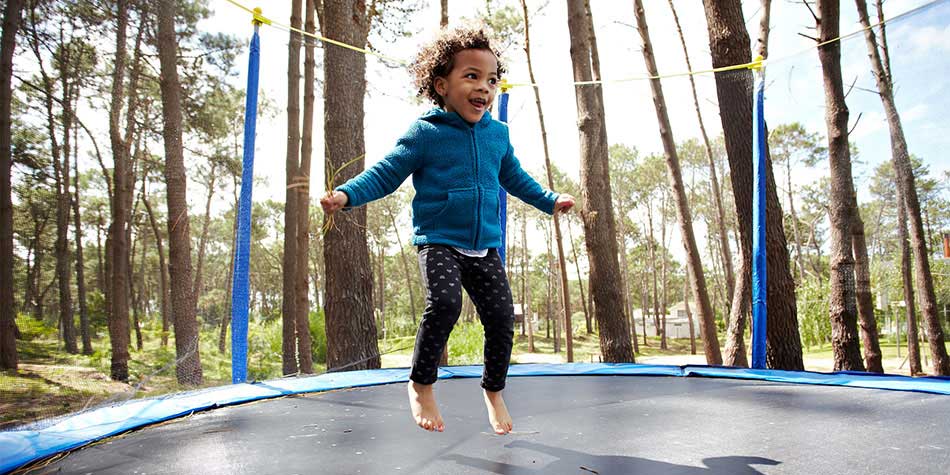
AAP advises against trampolines
Backyard trampolines are popular — although trampoline accidents send about 100,000 people to the emergency room each year. In fact, the American Academy of Pediatrics (AAP) advises against trampolines. Their key findings:
- Pediatricians should advise parents and children against recreational trampoline use.
- Current data on netting and other safety equipment indicates no reduction in injury rates.
- Failed attempts at somersaults and flips frequently cause cervical spine injuries, resulting in permanent and devastating consequences.
- Homeowners with a trampoline should verify that their insurance covers trampoline injury-related claims.
- Rules and regulations for trampoline parks may not be consistent with the AAP guidelines.
- Trampolines used for a structured sports training program should always have appropriate supervision, coaching, and safety measures in place.
If you have a trampoline or plan to get one, take some steps to make it as safe as possible:
- Adult supervision is a must — but keep in mind that many injuries occur under adult supervision. Make sure an adult is actively supervising and enforcing safety guidelines.
- Only one person should jump at a time. Many injuries happen when more than one jumper is on the trampoline.
- Do not allow children age 5 or younger to use the trampoline. Keep ladders, boxes and chairs away from the trampoline to prevent children from reaching it.
- Do not perform somersaults or flips and do not allow children to do so. Some of the most serious spine and neck injuries are caused by performing tricks.
- Do not allow jumping off the trampoline. Make sure jumpers go to the edge, sit down and slide off.
- Use protective padding designed for your trampoline. Make sure it’s in good condition and is placed correctly. Safety nets and padding may provide a false sense of security, but make sure to inspect them frequently for damage.
- Set the trampolines at ground level on a level surface, and be sure to keep the area clear of hazards.
- If your trampoline is worn or damaged, discard it.
- If your child will be jumping on a trampoline at a friend’s house, ensure that all these safety guidelines are being followed.
Trampoline parks are not a safe alternative; many injuries have occurred in trampoline parks. If you visit one or allow your children to, make sure all safety guidelines are being followed.
Otherwise, it’s best to follow the AAP’s advice and avoid recreational trampoline use. There are many safer activities for exercise and fun without the high risk of serious injury.
US News and World Report. S Reinberg. Bouncing from jump park trampolines into the ER. February 5, 2019. Available at US News - Bouncing from Jump Park into the ER
Nationwide Insurance. Trampoline safety tips everyone should know. Accessed September 30, 2019. Available at Nationwide - Trampoline Safety Tips
$webqFacilityNumber
Need a Physician?